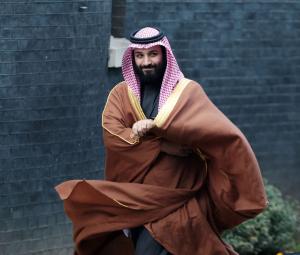May 2 (UPI) — It could take five years for Saudi Arabian oil production to return to levels from two years ago and that leaves overall GDP constrained, Moody’s said.
Saudi Arabia is the largest oil producer in the Organization of Petroleum Exporting Countries and the de facto leader of an effort to drain a surplus from the five-year average in global crude oil inventories. That surplus helped push the price of oil below $30 per barrel two years ago and the OPEC-led effort, coupled with heightened geopolitical tensions, has left oil trading in the $70 per barrel range for most of the year.
OPEC cuts are in their second year. Moody’s Investors Service said in a report emailed to UPI that it was supporting an A1-stable credit outlook for the kingdom given the “sizeable asset cushion” built up in oil revenues up until 2014. But it’s uncertain what happens after the deal expires.
“We expect that after the OPEC+ agreement expires by the end of 2018, it could take up to five years for its oil production to return to 2016 levels, which will in turn constrain overall GDP growth relative to historical trends,” its report read.
Secondary sources reporting to OPEC economists reported March production for Saudi Arabia averaged 9.93 million barrels per day, down from the 10 million barrels per day average for 2016. Oil and gas accounts for about 40 percent of the Saudi economy and cuts in crude oil production ate into real GDP growth by about 0.7 percent, even as the non-hydrocarbon sector grew by 1 percent last year.
According to the International Monetary Fund, Saudi Arabia has seen its first economic contraction since 2009. The IMF said it expects the price of oil to be in the $60 range on average through next year, which would represent a 20 percent increase over last year. If prices were to move higher, that could dampen demand.
Moody’s, for its part, said its baseline assessment was that oil prices would be volatile, trading in the range of $45 to $65 per barrel. The price for Brent crude oil, the global benchmark, was around $73 per barrel early Wednesday.
The so-called Saudi Vision 2030 is aimed at generating more growth from the non-oil sector. Higher crude oil prices, meanwhile, support the value for the eventual public offering of Saudi Aramco, the biggest oil company in the world.
Moody’s said the non-oil sector, however, has accelerated only slightly.
“As a result, the overall real GDP growth will remain below 2 percent during 2018-2022, which is markedly lower than the 4.6 percent growth rate recorded during 2011-16,” its report read.

COMMENTS
Please let us know if you're having issues with commenting.